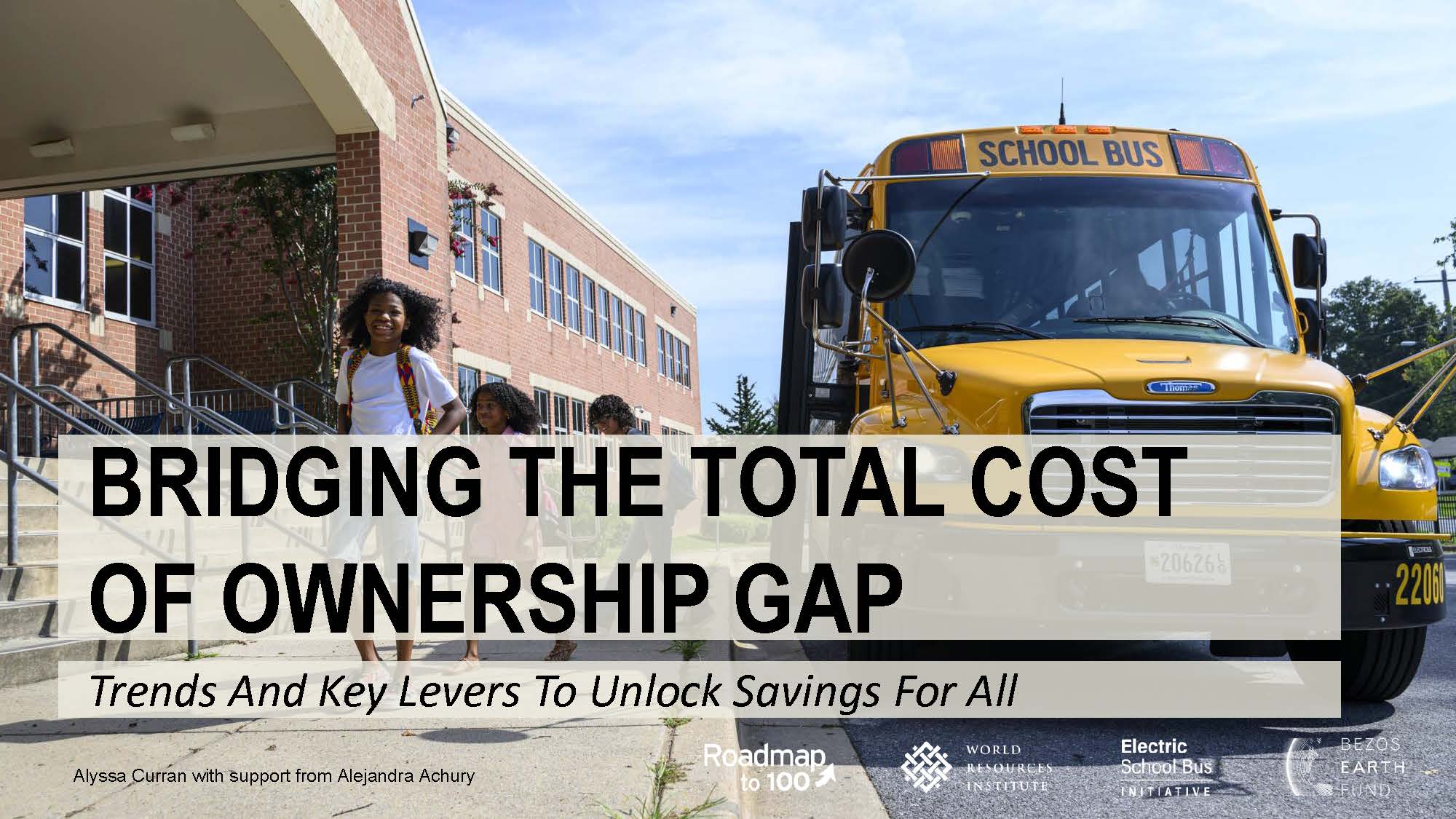
Electric school buses are rolling out across the country, and millions of school children will benefit from the zero tailpipe emissions, improved student attendance, and reduced greenhouse gas emissions compared to diesel school buses. The latest news on this transition was recently celebrated by the World Resources Institute at the Roadmap to 100 Summit in Baltimore, MD.
When Baltimore City Public Schools deployed its 25 electric school buses (ESBs) for the first day of school on August 26, 2024, bus drivers, parents, and students didn’t notice any noise, giving kids the opportunity to ‘ride into the future’.
According to Dr. Lynette K. Washington, Chief Operating Officer of BCPS, urban public school districts are often not on the forefront of such sustainability initiatives, which makes Baltimore’s deployment of ESBs all the more important. BCPS is working together with K. Neal Truck and Bus and Highland Fleets to create a healthy and safe environment for not only school children, but all of the community members whose neighborhoods the buses will drive through on a daily basis.
The World Resources Institute’s Electric School Bus Initiative is building momentum towards equitably transitioning the U.S. school bus fleet to electric by 2030.
In Connecticut, 2023 funding from the EPA will help districts purchase at least 50 ESBs to be used in 6 school districts across the state. CTC looks to collaborate with policymakers and community members, which is why the 2024 ‘Roadmap to 100 Summit’, hosted by the WRI and the Bezos Earth Fund was the perfect opportunity for CTC to meet other changemakers. The sessions explored some of the leading challenges and opportunities to full fleet electrification by drawing on the breadth and depth of knowledge from attendees.

Image courtesy of Bluebird Clean Bus Solutions
“Total Cost of Ownership” is key
Kevin Moss of the CT Green Bank spoke on how the economics of full fleet electrification hinge on reaching total cost of ownership (TCO) parity with fossil-fueled buses. The session focused on near future anticipated TCO trends, along with key incentive and finance levers to help reduce upfront costs and unlock value stream savings and benefits for all communities. ESBs carry a moderate upfront TCO premium of about $229,000, with the battery making up 30-50% of the cost of the bus. Luckily, the WRI has developed a total cost of ownership calculator for ESBs to help school districts easily estimate the TCO for their fleets. While MSRPs range substantially across states, the discussants – including Duncan McIntyre, CEO, Highland – felt that a $240-250,000 price point should be possible in the next 3 years despite some setbacks due to COVID-19 disrupting supply chains.
A recent Harvard study found that replacing an average diesel school bus with an ESB resulted in $84,200 in total benefits per bus. This is encouraging news for school districts looking to make the switch.
Thinking beyond the bus
Other speakers focused on potential opportunities to ensure that disabled and marginalized students are not left behind during fleet electrification. Funding agencies need to provide pre-planning funding that includes community input prior to procurement. The ESB movement offers a chance to right historical inequities and provide safer routes for children across the country.
An effective way to support the sustainable management of batteries at their end-of-life, reduce supply chain disruptions, and minimize waste could be with Digital battery passports (DBPs). Structuring incentive programs to promote equipment standardization across the ESB market could help promote DBPs, along with potential Green Bank funding.
The Summit emphasized the importance of planning ahead for charging infrastructure, before bus procurement and deployment. To effectively prepare for the overall transition, school districts should be prepared to make right-sized investments into their bus charging and procurement plans, and use non-traditional messengers to advocate for transitioning away from conventional diesel buses.
Check out total cost of ownership, advancing infrastructure, ensuring successful deployments, supporting scale and more in WRI’s Roadmap to 100 Slide Deck. Great graphics, too!
Make sure to keep an eye out for future opportunities from CT’s Department of Energy & Environmental Protection (DEEP) and the CT Green Bank for new state funding and financing opportunities expected in 2025 to supplement federal funding.
Sign up for CTC’s monthly newsletter to keep informed of the latest news on the shift to cleaner, smarter transportation in CT.
